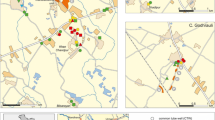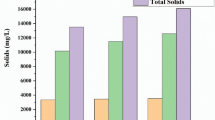Abstract
With only twenty five percent population living in urban areas, India has cities amongst the biggest in the world. Urban growth in most of Indian cities is concomitant with rise in water demand for community, as well as, for industrial purposes. The complex situation resulting from indiscriminate disposal of waste and its severe impact on groundwater quality is set for continuous worsening mainly for want of sustained effort aimed at site-specific remediation.
The study, a prerequisite for actual remediation in an industrial city of Kanpur, India, envisages detailed investigation about pollutant transport, evaluation of concept of Bio-remediation and a range of other options and finally full scale implementation of the best suited. Drilling of piezometers and resistivity survey indicates that the area is constituted of alluvial sands, gravels and their various admixtures. Chemical analysis of water samples collected from piezometers and hand pumps shows the presence of hexavalent chromium rich horizons at various depths. The alarming concentration of this carcinogenic heavy metal of the order of 16.3 mg/l against the permissible concentration (of 0.05 mg/l) for drinking water and high concentration within sediments of the area poses a major threat to the entire ecosystem. The projection of migration contaminant plume of hexavalent chromium as depicted in the paper is indicative of a concentrated extent of core zone existing in shallow alluvial aquifer, which may be targeted for interception by remedial measures.
The present work, elaborating on the source, potential and monitoring the migration of the pollutant plume is the first field scale study of its kind in the country. The findings of these studies are of strong relevance in addressing the ground water pollution due to indiscriminate disposal practices of hazardous waste in areas located within the alluvial zones.
Similar content being viewed by others
References
Ansari, A.A., Singh, I.B. and Tobschall, H.J. (1999) Status of anthropogenically induced metal pollution in the Kanpur Unnao industrial region of the Ganga plain, India. Environmental Geol., v.38(1), pp.25–33.
Bear, J. (1972) Dynamics of fluids in porous media. New York, 764p.
Central Ground Water Board, Lucknow (2000) Groundwater Pollution Studies in Unnao-Kanpur Industrial Areas, Uttar Pradesh, pp.21.
Central Ground Water Board (CGWB), New Delhi (2001) Groundwater for everyone, 1p.
Central Pollution Control Board (CPCB) India (1996) Report on Standard for liquid effluents, gaseous emissions, automobile exhaust, noise and ambient air quality no.PCL/4/1995-96, 109p.
Central Pollution Control Board (CPCB), India (1997) Report on Groundwater quality in Kanpur, status sources and control measures no.GWQS/8/1996-97, 33p.
Clesceri, L.S., Greenberg, Arnold, E. and Trussel, R.R. (1989) Standard Methods for the examination of water and wastewater, 17th edition, APHA-AWWA-WPCF. American Public Health Association, Washington D.C., 1470p.
Groundwater Department, Uttarpradesh (1994) Report on Technical Feasibility of Groundwater Development in various blocks of District Kanpur, India, 11p.
Guiger, N. and Franz, T. (1996) Visual MODFLOW: Users Guide. Waterloo, Ontario, Canada, 434p.
Mcdonald, J.M. and Harbaugh, A.W. (1988) A modular three dimensional finite-difference groundwater flow model. Techniques of Water resources Investigations of the U.S. Geol. Surv. Book-6, 586p.
National Commision For Integrated Water Resources Development (NCIWRD) (1999) A report of Ministry of water resources, Government of India. Volume 1, pp.39–46.
Singh, I.B. and Bajpai, V.N. (1989) Significance of syndepositional tectonics in facies development, Gangetic alluvium near Kanpur, Uttar Pradesh. Jour. Geol. Soc. India, v.34, pp.61–66.
Singh, M., Ansari, A.A., Muller, G. and Singh, I.B. (1997) Heavy metals in freshly deposited sediments of the Gomti river (atributary of Ganga river: effects of human activity. Environmental Geol., v.29(3/4) pp.246–252.
Zheng, C. (1990) MT3D, a Modular three-dimensional transport model for simulation of advection, dispersion and chemical reactions of contaminants in groundwater system prepared for the U.S. Environmental Protection Agency, 170p.
Zohdy, A.A.R. (1989) A new method for automatic interpretation of Schlumberger and Wenner sounding curves. Geophysics, v.54(3), pp.245–253.
Author information
Authors and Affiliations
Corresponding author
Rights and permissions
About this article
Cite this article
Singh, R.K., Sengupta, B., Bali, R. et al. Identification and mapping of chromium (VI) plume in groundwater for remediation: A case study at Kanpur, Uttar Pradesh. J Geol Soc India 74, 49–57 (2009). https://doi.org/10.1007/s12594-009-0103-z
Received:
Revised:
Published:
Issue Date:
DOI: https://doi.org/10.1007/s12594-009-0103-z




